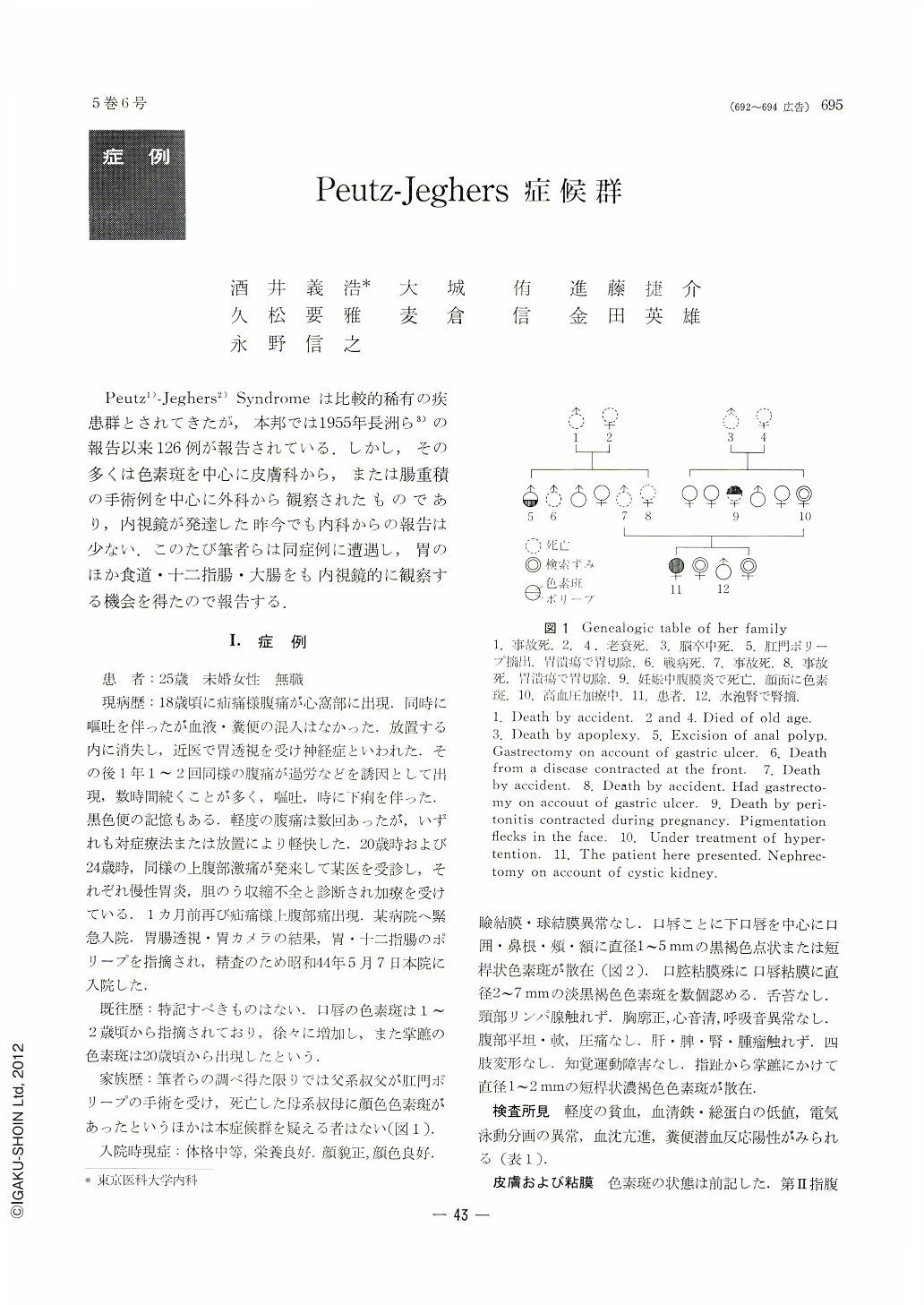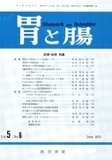Japanese
English
- 有料閲覧
- Abstract 文献概要
- 1ページ目 Look Inside
Peutz1)-Jeghers2) Syndromeは比較的稀有の疾患群とされてきたが,本邦では1955年長洲ら3)の報告以来126例が報告されている.しかし,その多くは色素斑を中心に皮膚科から,または腸重積の手術例を中心に外科から観察されたものであり,内視鏡が発達した昨今でも内科からの報告は少ない.このたび筆者らは同症例に遭遇し,胃のほか食道・十二指腸・大腸をも内視鏡的に観察する機会を得たので報告する.
A case of Puetz-Jeghers syndrome has been described in which gastrointestinal endoscopy was performed as far as possible. This 25-year-old female was admitted to Tokyo Medical College Hospital on April 15, 1969, with the chief complaint of epigastric pain, which she had suffered once or twice a year since the age of 18. No contributory family history of abnormal pigmentation or significant gastrointestinal symptom was obtained except that her uncle had suffered from anal polyp. Physical findings showed typical pigmentation of Peutz-Jeghers syndrome. Melanin deposition was seen histopathologically from skin biopsy in the crista profunda intermedia. Laboratory data showed low-grade anemia, hypoproteinernia, decreased serum iron, accelerated erythrocyte sedimentation rate, and guaiac-positive stool. Gastrointestinal X-rays indicated small round subtraction shadows in the body and antrum of the stomach, in duodenum, in proximal jejunum and distal ileum. The barium enema examination showed polyp shadows in the ascending colon, transverse colon, sigmoid and rectum. Fiber-esophagoscopy appeared normal. Gastrocamera examination showed a number of polyps with and without stalk spread from fornix to antrurn. Fiber-duodenoscopy revealed granular hypertrophic mucosa and polyps. Fiber-rectosigmoidoscopy revealed several polyps with and without stalk. Histological examination showed adenomatous polyps in the specimens obtained by punch biopsy under direct vision from the stomach, sigmoid, and rectum.
In Japan, 126 cases with Peutz-Jeghers syndrome have been reported. Twenty cases of them failed to reveal gastrointestinal polyp. Seventy five cases (70,8%) underwent laparotorny, while gastroscopy and gastrocarnera examinations were done in 27 cases (25.5%) and proctoscopy in 26 cases (24.6%). Fiber-duodenoscopy and fiber-rectosigmoidoscopy has not yet been reported in the previous cases with Peutz-Jeghers syndrome. Malignant changes on these polyps were described in 8 cases; 4 in the stomach, 3 in the jejunum, and one each in the duodenum, ileum, and rectum, and 7 cases developed atypical cell change; 3 in the jejunum, 2 in the rectum, one each in the cecum and sigmoid. It is suggested that Peutz-Jeghers polyp should be followed up endoscopically in the stomach, sigmoid, rectum, and, if possible, in the proximal small bowel.

Copyright © 1970, Igaku-Shoin Ltd. All rights reserved.


